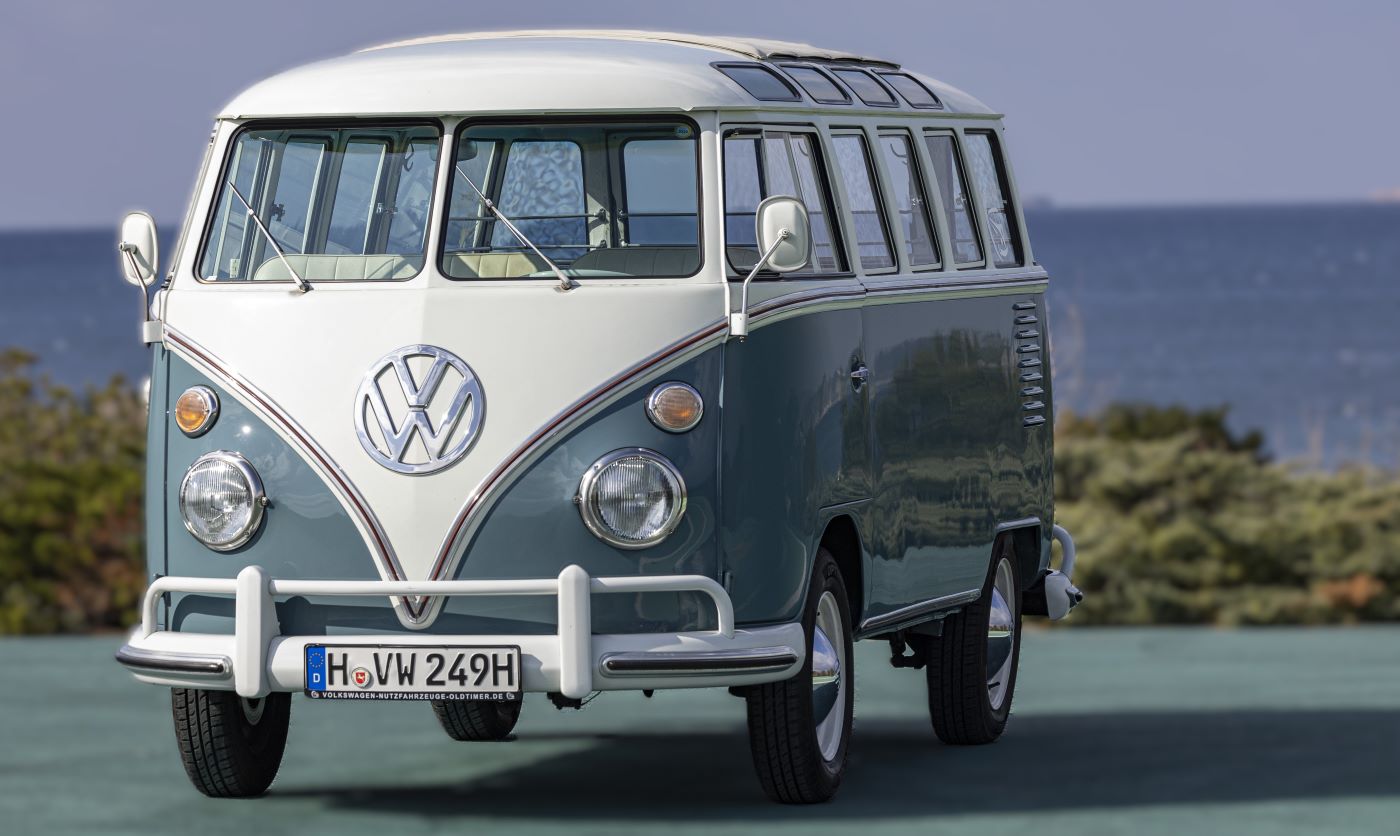
While the idea of a Beetle-based commercial vehicle was enthusiastically welcomed by Volkswagen, it wasn’t until the late 1940s that the factory had the resources to put in into production. In a timeframe that would be unthinkable today, the T1 went from drawing board to production line in just 13 months. In 1954, having tested the water in Volkswagen’s home market, the Transporter T1 made its public debut at the Earls Court Commercial Motor Show.
Having quickly established its superiority over its rivals, the T1 became the template for light commercial panel vans, pick-ups and microbuses – selling strongly for 17 years.
Such was the brilliance of the original that the T2 that replaced it in 1967 retained much of its underpinnings. Even the boxy third-generation T3 that appeared in 1979 employed the neatly balanced, load-friendly rear engine layout of the original.
Indeed, it wasn’t until the fourth-generation T4 arrived in 1990 that Volkswagen switched to the now familiar front-engine, front-wheel drive layout. And just as the original had done in 1954, the T4 set new standards for refinement, quality and flexibility.
Volkswagen Transporter T1
The T1 was manufactured in Hannover, Germany from 1950 until 1967

T1 – 1950 to 1967: Europe had to reinvent itself in 1950 and, with it, above all, the Federal Republic of Germany, which was founded a year earlier. American Bing Crosby was the musical superstar at the time, Elvis Presley was still a teenager, and Paul McCartney was a school boy. While rock music was only about to be invented, Volkswagen was already producing a small car for the fifth year, a car that was enjoying success all over the world: the Beetle, also known as Type 1. During this time, on 8 March, Volkswagen started series production of a second product line: the Transporter. Internally, they simply called it Type 2. It was still a blank page in the history of the automobile. But one that was eagerly anticipated. Because companies in the Federal Republic of Germany in particular – the burgeoning economic miracle – urgently needed an affordable van. A name for the Type 2 was also urgently needed. As early as 1949, Volkswagen had wanted to register the name ‘Bulli’ for the VW Bus with the patent office. But another company had previously secured the rights for a snow groomer. Unlucky, or perhaps not: because the name Bulli somehow made its way to the fans. The unofficial name of the van for the German-speaking region was born. Officially, it initially remained the ‘Transporter’.
The first version of the 4.10-metre-long Transporter or T1 was a panel van without windows in the load compartment. Its load compartment had a considerable capacity of 4.5 cubic metres. The two-piece split-window windscreen resulted in it being given the nickname “Splittie” in Great Britain. With the 18 kW (25 PS) four-cylinder flat engine from the Beetle, the T1 reached a top speed of 80 km/h; later the output would increase to 32 kW (44 PS) with a maximum speed of 105 km/h. Further body variants followed quickly: a Kombi version (with windows at the rear) was already available in April 1950, followed by a minibus and a dropside. The special model that is today considered the most legendary of all classic VW Bus vehicles made its debut in June 1951: the ‘Small Bus Special Version’ – christened ‘Samba bus’ by fans. It had room for nine people and came with up to 23 windows, two-tone paintwork and a luxurious specification including a panoramic folding roof. In 1956, Volkswagen relocated production to the new Hanover plant. On 2 October 1962, the one millionth T1 already left the assembly halls. In July 1967, the T1 was replaced by the T2 after more than 1.8 million units. However, they still built the T1 in Brazil until 1975. The first generation in particular is very popular among collectors; depending on the variant, up to six-digit euro sums are paid.
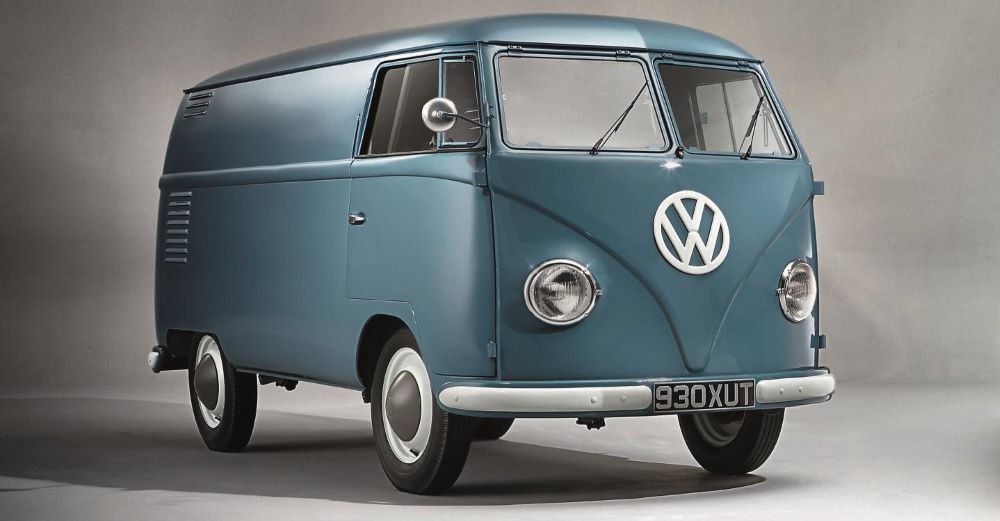
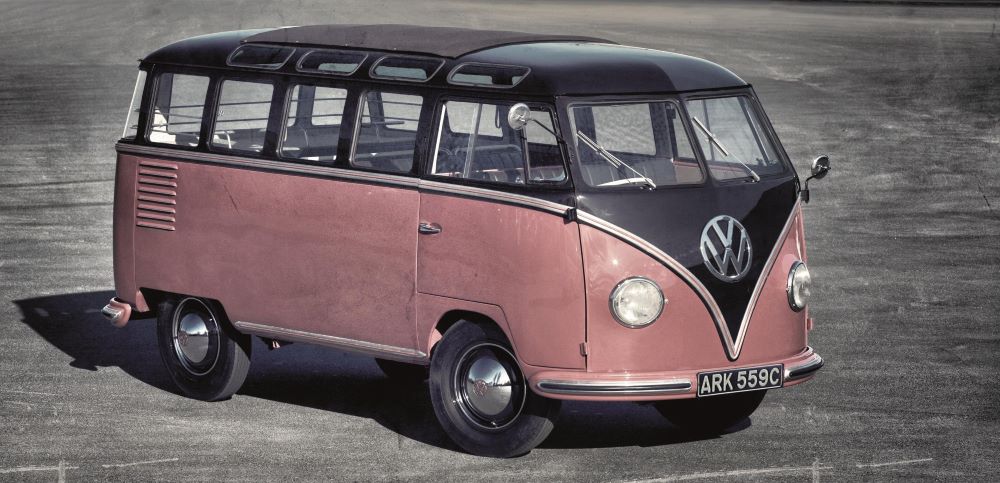
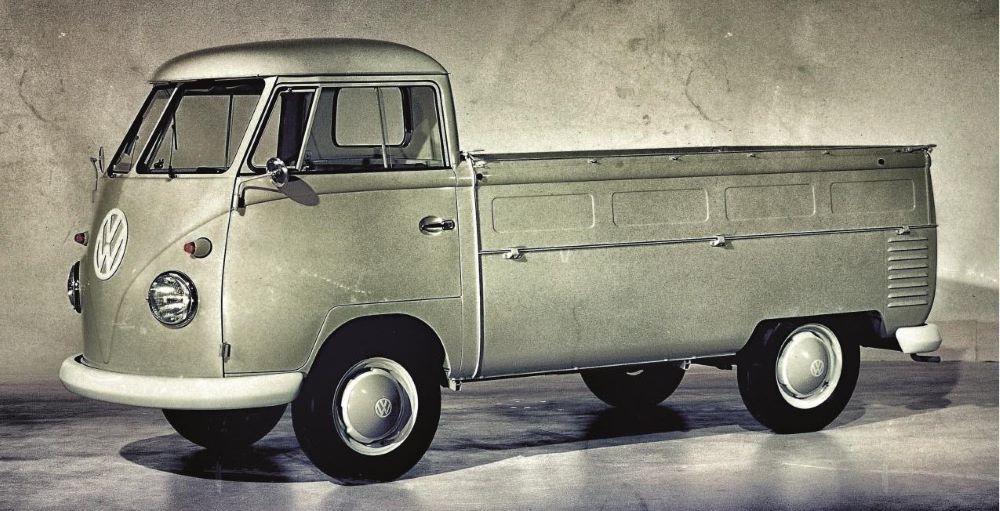
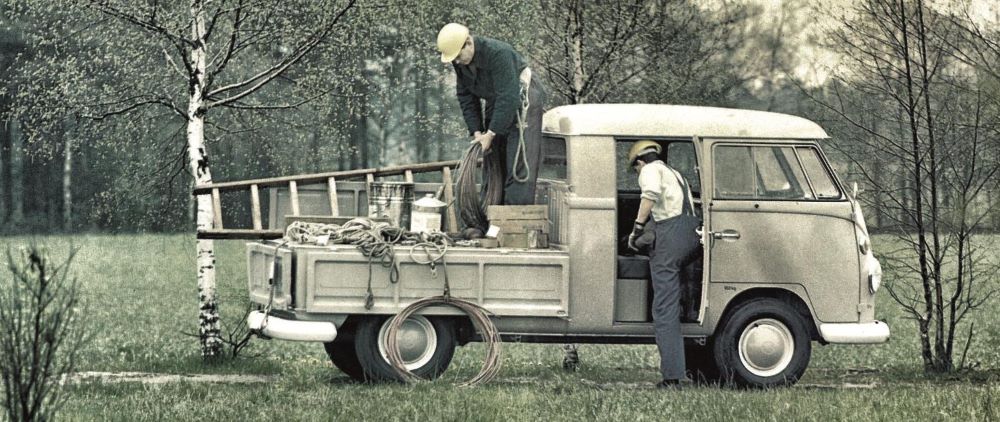
Volkswagen Camper Van Milestones:
| 1949: | The first ever Volkswagen Transporter van is launched at the Geneva Motor Show, with its distinctive smiling face. |
| 1951: | The Volkswagen Transporter is developed into the iconic Volkswagen camper van. |
| 1960s: | The camper van is adopted by the hippie generation, becoming a cult symbol of an alternative lifestyle. |
| 1967: | Second generation Transporter, known as the T2, does away with the classic, ‘splittie’ (split windscreen) design and introduces panoramic vision, gaining the nickname ‘Bay’. |
| 1969: | A Volkswagen camper van becomes the ‘Mystery Machine’ in hit cartoon series ‘Scooby Doo’. |
| 1979: | The T2 becomes the T3, boasting a more angular design |
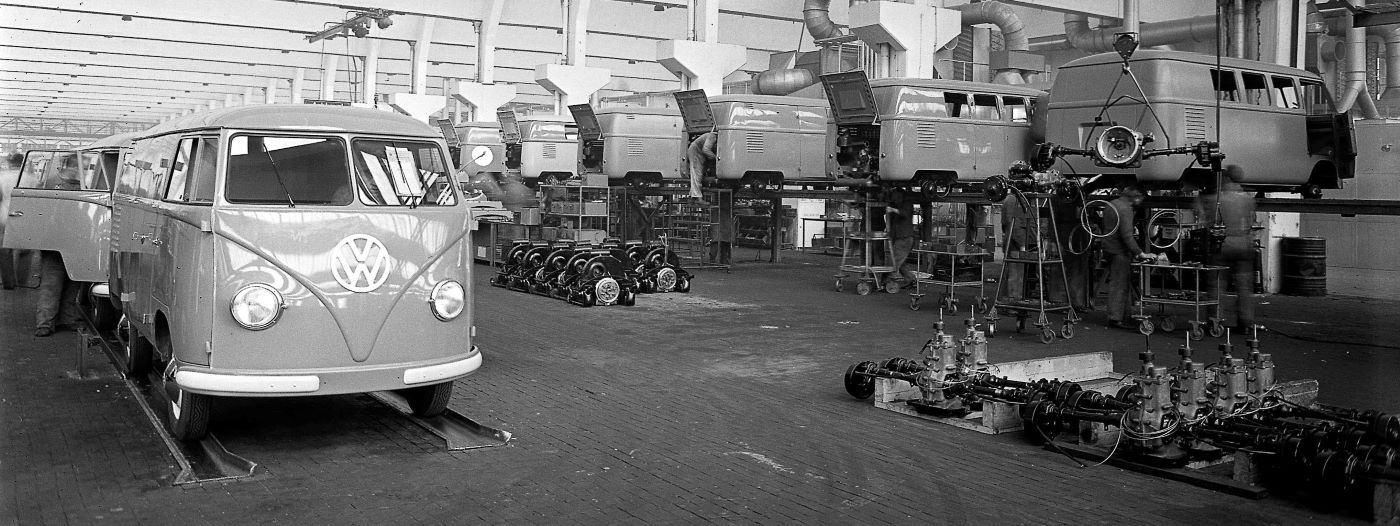
BULLI PRODUCTION OF VOLKSWAGEN VEHICLE BEGAN 65 YEARS AGO
- From work-horse to legend
- Sketches in a notepad are basis for its success story
- 11 million T-series vehicles sold worldwide
Hanover/Wolfsburg, 10 March 2015 – Some retire at the age of 65 – but this one is just getting started! Production of the first Volkswagen Transporter began 65 years ago and the ‘Bulli’ is still going strong today. The first models were built in Wolfsburg before production started at a new facility in Hanover in 1956. This date also marks the beginning of a unique automotive love story: today, the entire model series has attained cult status. Whether hippy or tradesman – everyone is driving Transporter.
It all began in 1947 with a pencil sketch: the Dutch car importer Ben Pon saw a simple flat-bed vehicle at the Volkswagen plant and, taking it as a basic idea, he sketched the outlines of a Transporter with Beetle DNA in his notebook.
Two years later, Volkswagen Plant Manager, Heinrich Nordhoff, presented four prototypes: two panel vans, a kombi and a small bus. Nordhoff promised that the Transporter would be as uncompromising and robust as the Beetle: ‘These vehicles won’t be handled with kid gloves, rather they will be treated roughly.’
Designers used the engine and axles of the Beetle. Instead of a central tubular frame of the popular family car, the bus had a unitized body that was mounted on a ladder frame. The 1.1-litre engine produced 18 kW (24.5PS) at 3300 rpm. The bus could transport up to eight people and the two rear seat rows could be removed easily to free up load space for around 750 kg of payload.
Alfred Haesner, Head of Technical Development of Volkswagen GmbH from 1948 to 1952, said: ‘Accordingly, this type of commercial delivery vehicle can be used for all branches of business, for rush deliveries and freight, e.g. as a small bus, a special-purpose vehicle, postal vehicle, ambulance or mobile station.’
Production began on 8 March 1950, in Hall 1 of the Volkswagen plant in Wolfsburg, and ten vehicles were manufactured per day.
By the end of 1950, 8001 Transporters had already been built. Demand was enormous, especially since its affordable price made it an attractive option to tradesmen and retail businesses. The unique vehicle quickly became an export hit as well. Volkswagen buses could simply transport anything and everything: rubble and debris, mortar and building stones, breakfast rolls and bees wax, cigars and newspapers.
A Volkswagen bus with a camping box made its appearance in 1951 at the automobile exhibition in Berlin. The delivery van with a rear engine suddenly held the promise of an entirely different type of travel. For the first time, it travelled over the Alps. Later, it was driven to India when hippies discovered the ‘Bulli’ for themselves.
Four years after its production launch, the 100,000th Volkswagen Transporter came off the assembly line in Wolfsburg in 1954. By this point, there were 30 different models of the vehicle. Daily production in Wolfsburg was at 80 vehicles but it couldn’t produce more because the plant was already filled to capacity with Beetle production. It became clear that the Transporter needed its own plant.
Construction work began in early March 1955 in Hannover-Stöcken, and the plant was built from the ground up in just one year. In March 1956, the first “Made in Stöcken” Transporters come off the assembly line. This was the beginning of a future symbol of the ‘economic wonder years’. Today, a total of 11 million T-series vehicles spanning five generations have been produced worldwide.
Dr. Eckhard Scholz, Chairman of the Brand Board of Management of Volkswagen Commercial Vehicles, said: ‘The production launch of the T1 represented the beginning of a long success story that has lasted right up to today. In the past, as well as the present, there is market demand for extremely reliable, versatile and individual vehicles. We deliver them in top quality and precisely tailored to every need – whether the vehicle is for trades work, a retail or service business, family or recreation.’
Production of the new generation model, the T6, launches this year. Along with the T-series, the Hannover-Stöcken plant also produces the Amarok pick up. The successful California recreational vehicle is built not far away in Limmer. Around 12,200 people are employed at the Hannover business site of Volkswagen Commercial Vehicles.
The Poznan plant in Poland (5,700 employees) produces the Transporter and the Caddy, and another plant is being built in nearby, Wrzesnia for the new Crafter. Today, a total of around 19,500 employees work for the Volkswagen Commercial Vehicles brand.
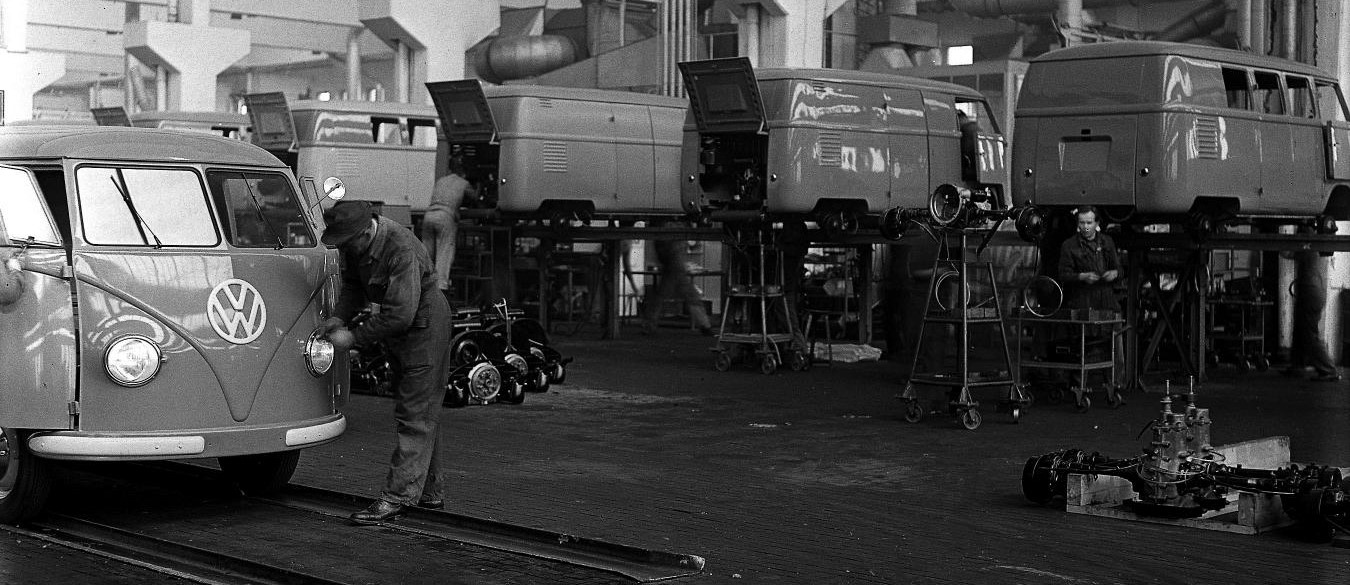
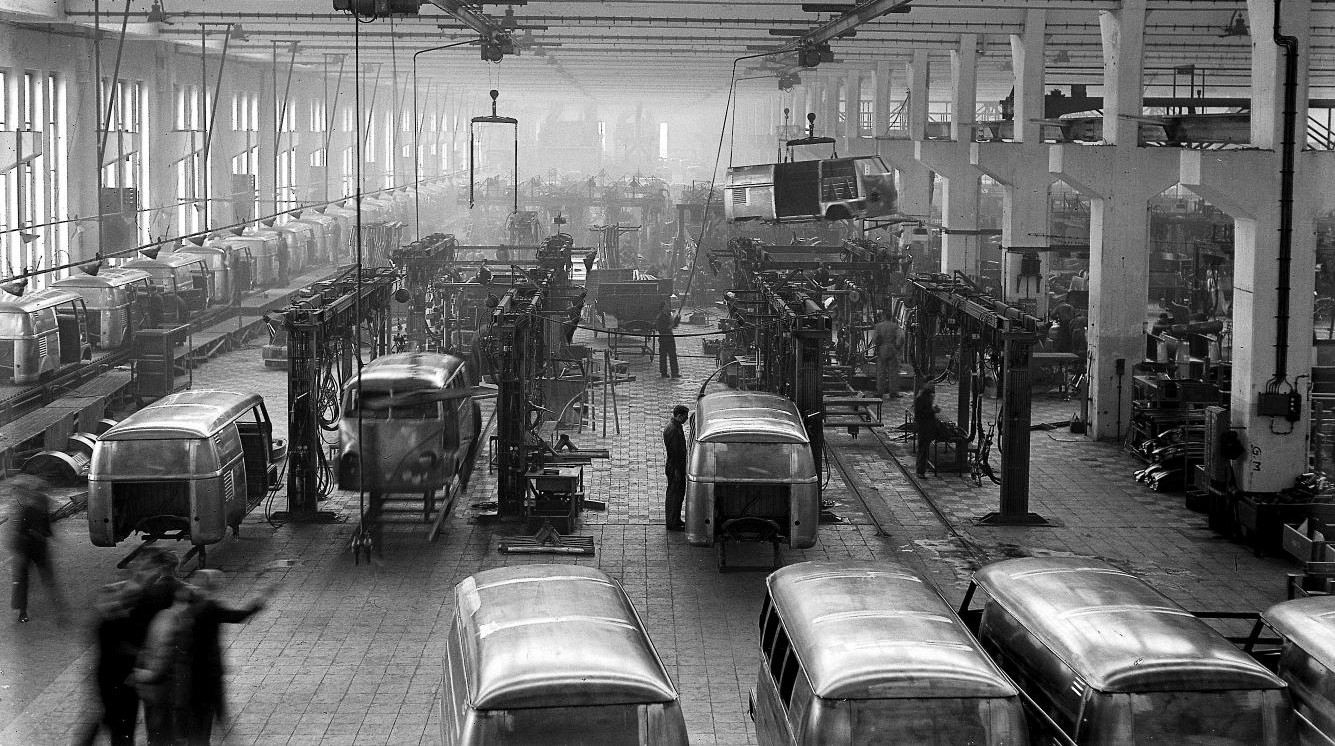
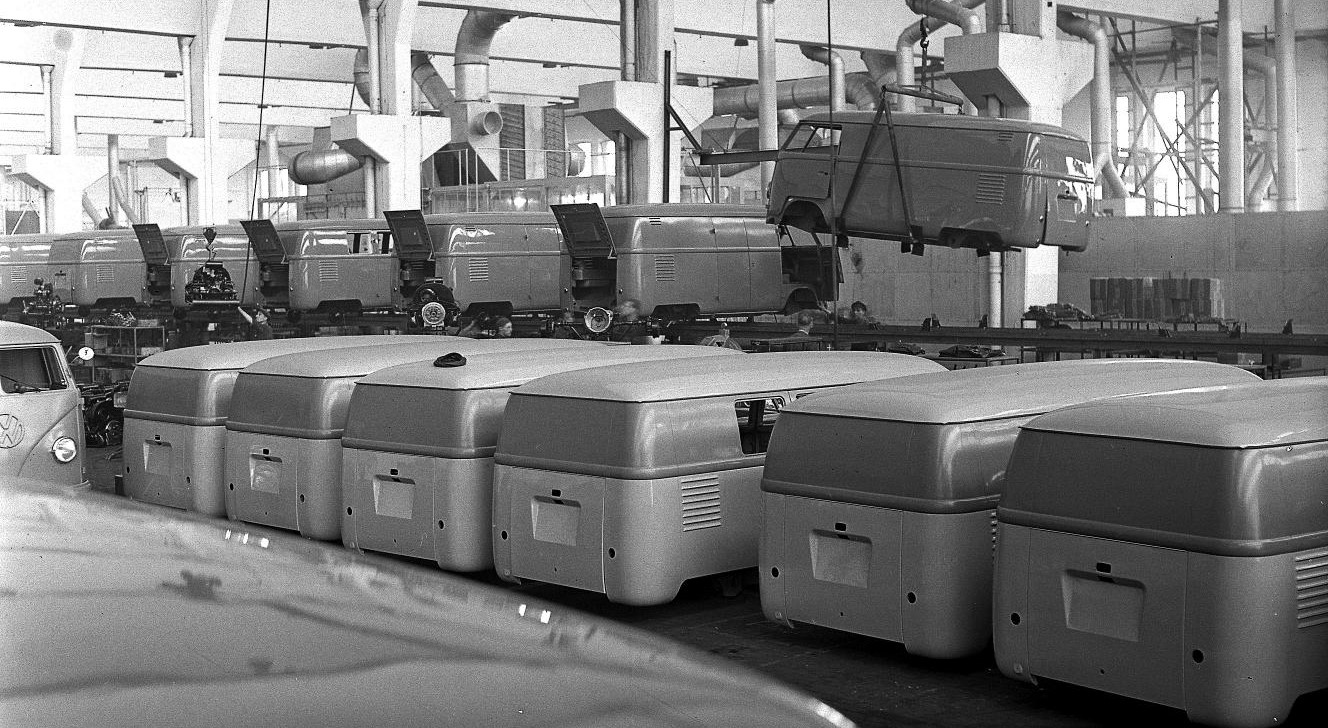

You must be logged in to post a comment.